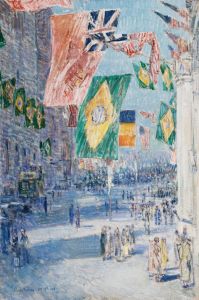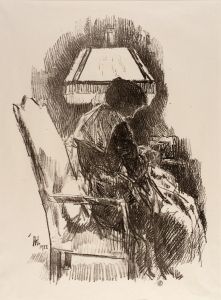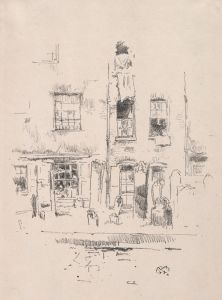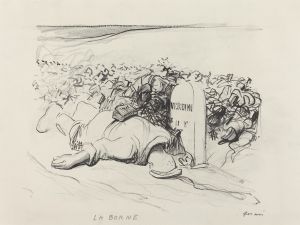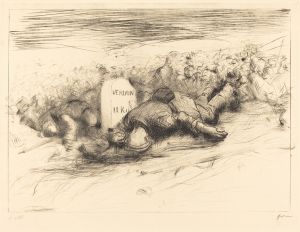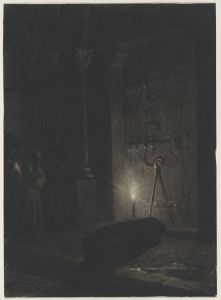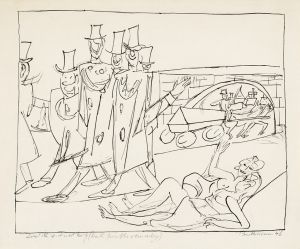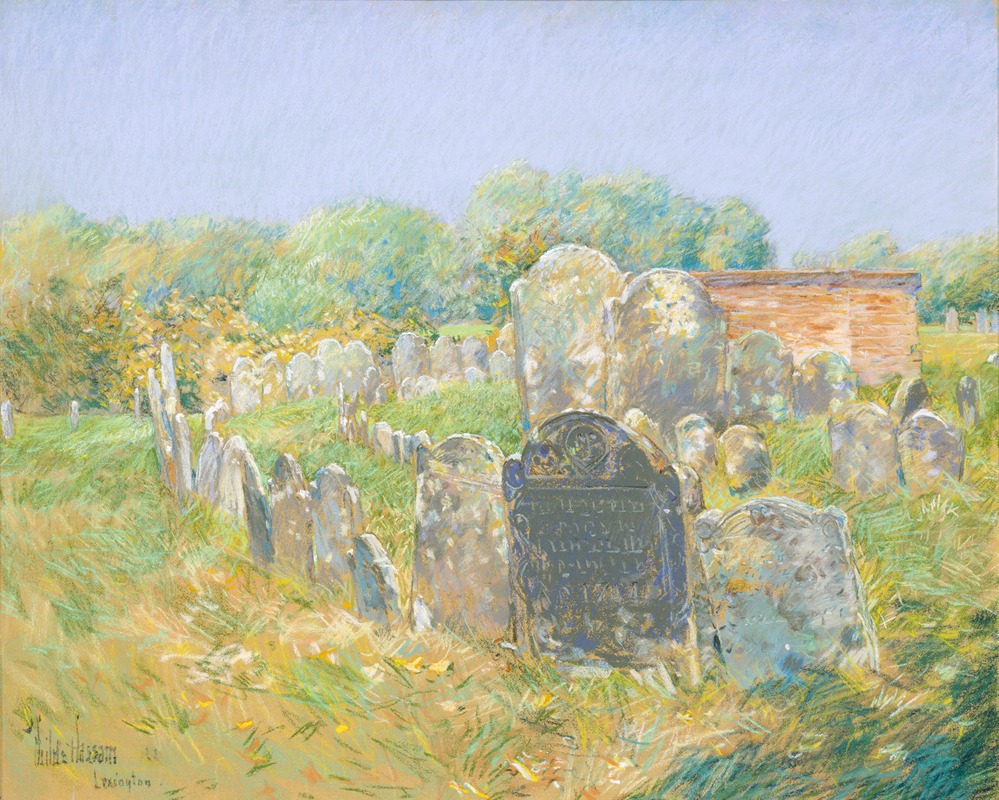
Colonial Graveyard at Lexington
A hand-painted replica of Childe Hassam’s masterpiece Colonial Graveyard at Lexington, meticulously crafted by professional artists to capture the true essence of the original. Each piece is created with museum-quality canvas and rare mineral pigments, carefully painted by experienced artists with delicate brushstrokes and rich, layered colors to perfectly recreate the texture of the original artwork. Unlike machine-printed reproductions, this hand-painted version brings the painting to life, infused with the artist’s emotions and skill in every stroke. Whether for personal collection or home decoration, it instantly elevates the artistic atmosphere of any space.
Childe Hassam, an influential American Impressionist painter, created the artwork "Colonial Graveyard at Lexington" in 1895. This painting is a part of Hassam's extensive body of work that captures the essence of American landscapes and urban scenes with a distinct Impressionist style. Hassam, born in 1859 in Dorchester, Massachusetts, was a leading figure in the American Impressionist movement, known for his ability to blend the techniques of European Impressionism with distinctly American subjects.
"Colonial Graveyard at Lexington" depicts a serene and historical scene in Lexington, Massachusetts, a town known for its significant role in American history, particularly as the site of the first battle of the American Revolutionary War. The painting features a graveyard, which is a common subject in Hassam's work, reflecting his interest in capturing the quiet beauty and historical depth of New England.
Hassam's technique in this painting, as in many of his works, involves the use of loose brushstrokes and a vibrant palette, which are characteristic of the Impressionist style. This approach allows him to capture the play of light and shadow across the landscape, giving the scene a sense of immediacy and atmosphere. The painting likely reflects the seasonal changes and the quality of light that Hassam observed during his visits to the area.
The graveyard itself, a colonial-era site, serves as a reminder of the historical significance of Lexington. It is a place where early American settlers were laid to rest, and its inclusion in Hassam's work underscores the artist's interest in the intersection of history and nature. The gravestones, rendered with a delicate touch, suggest a respect for the past and an appreciation for the stories embedded in the landscape.
Hassam's work is often noted for its ability to convey a sense of place, and "Colonial Graveyard at Lexington" is no exception. The painting not only captures the physical attributes of the graveyard but also evokes a sense of tranquility and reflection. This ability to imbue a scene with emotion and historical context is a hallmark of Hassam's artistry.
Throughout his career, Hassam produced numerous works that explored similar themes, often focusing on the New England region. His paintings are celebrated for their ability to blend the Impressionist style with American themes, making him a pivotal figure in the development of American art during the late 19th and early 20th centuries.
"Colonial Graveyard at Lexington" is a testament to Hassam's skill in capturing the essence of American landscapes and his dedication to portraying the historical and cultural significance of the places he painted. Today, his works are held in high regard and can be found in major museums and collections, reflecting his lasting impact on the art world.







